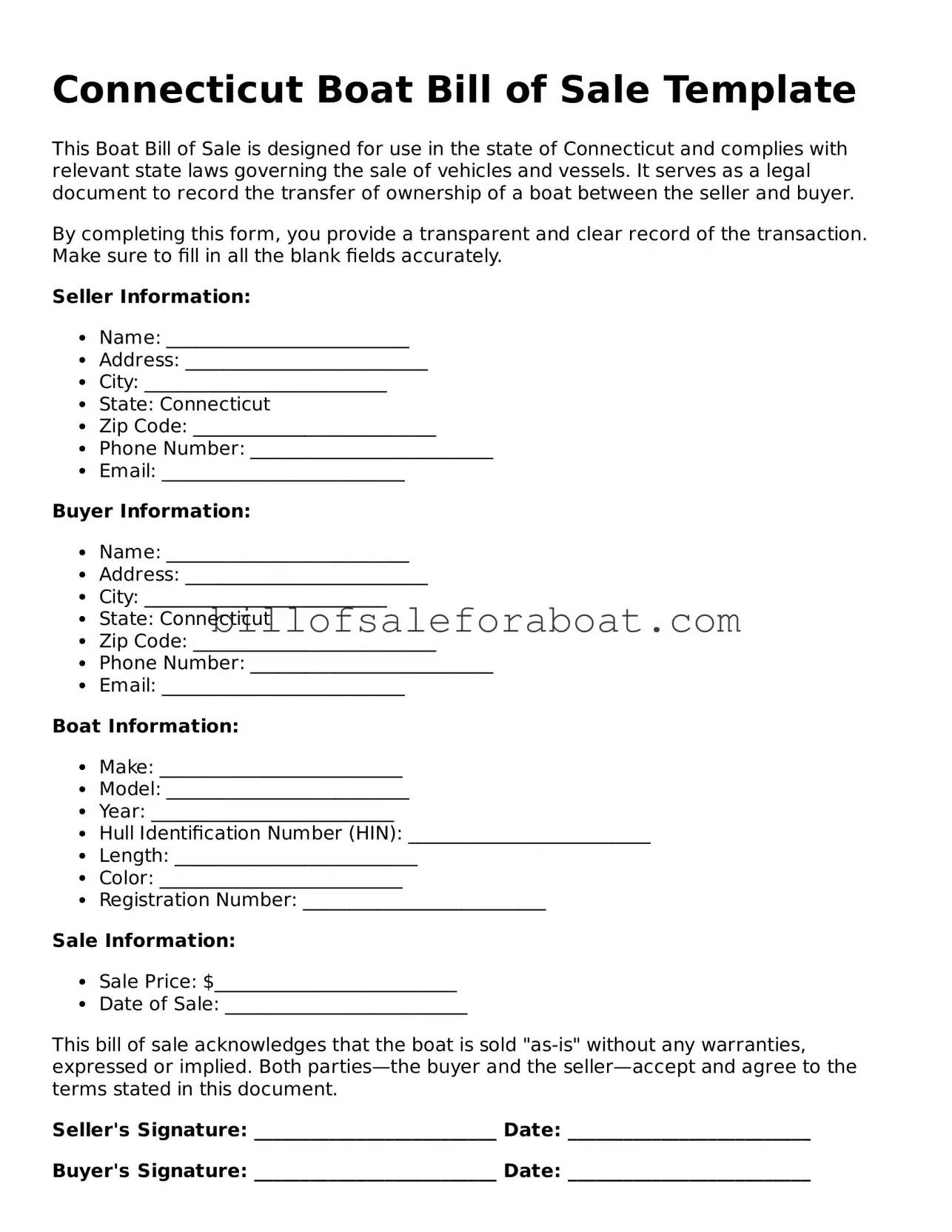Boat Bill of Sale Template for Connecticut State
The Connecticut Boat Bill of Sale form serves as a crucial document that records the transfer of ownership for a boat from one party to another. This form not only provides proof of the transaction but also helps ensure that both the buyer and seller are protected during the sale process. Understanding its importance can streamline the buying or selling experience, making it essential to complete this form accurately.
Ready to get started? Fill out the form by clicking the button below.
Open Boat Bill of Sale Now
